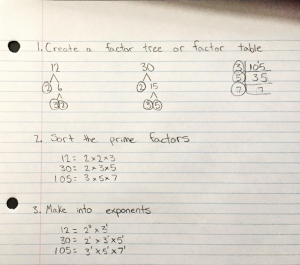This week I learned how to find the GCF of a polynomial. This post will teach you how understand how to find the answer. It seems very complicated at first but if you give it a chance you will learn very quickly. It is not as hard as it seems.
Ex. 9ab – 12ac
Step 1: Start with the numbers and find the greatest common factor.
*The greatest common factor of 9 and 12 would be 3. 3 x 4 = 12 and 3 x 3 equals 9.
- Divide by the GCF and bring the 3 to the to the front of the brackets.
Step 2: Move to the variables. Start with the beginning of the alphabet
*Subtract the a with the lowest exponent from the rest of the a’s. Remember that a variable with no exponent has an invisible one.
* remember to bring the a with the lowest exponent out into the front of the brackets. If there is only one of the same variable then you just leave it because it is not common in both. It will be in the left overs.
Step 3: Repeat step 2 with the other variables if possible.
See Pictures Below 🙂
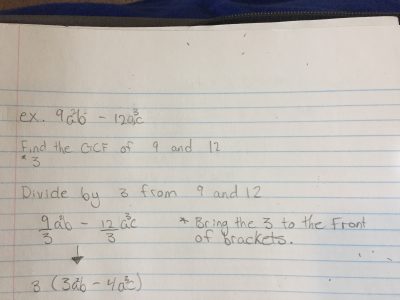

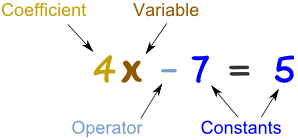
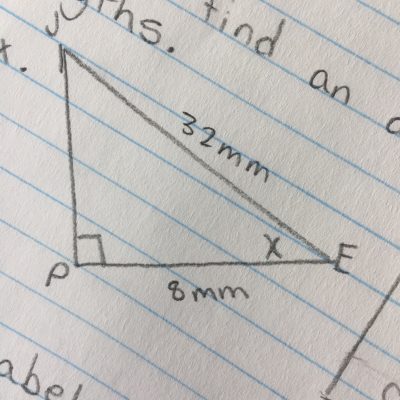

















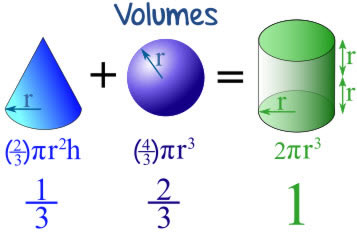 One cone with + One Sphere = The volume of a cylinder
One cone with + One Sphere = The volume of a cylinder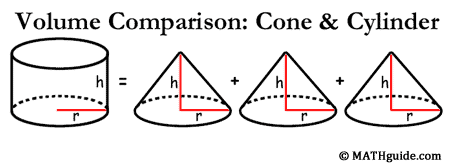 Three cones = the volume of a cylinder
Three cones = the volume of a cylinder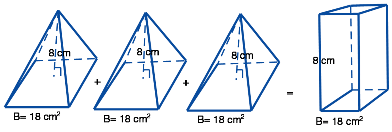 Three pyramids = A Square/rectangle
Three pyramids = A Square/rectangle









